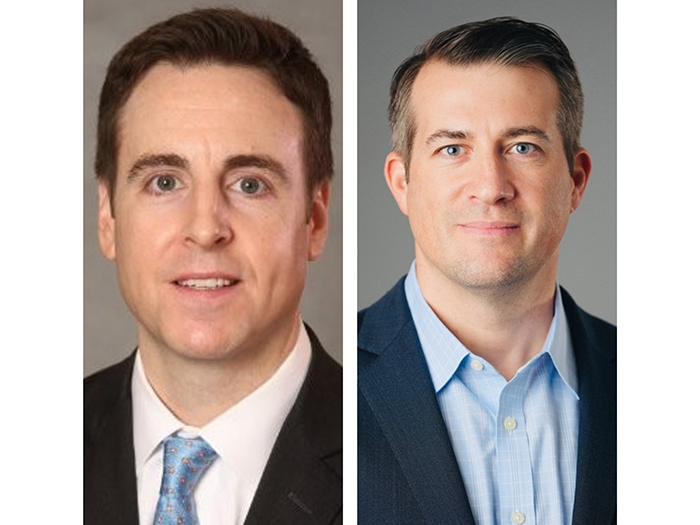No, Really: Insurance Could Lead the Charge in Curbing Gun Violence

Gun violence and active shooter events in the United States do not need an introduction.
They are happening daily, across the nation, with a death toll that reaches over 40,000 each year, per PEW Research. One even occurred during an interview this reporter had with a source for this very article, alerts pinging in the background as we talked about how to prevent gun-related massacres.
Those in charge of people and organizations want to protect them — and insurance and risk management is in a prime position to help.
“Risk management is always concerned about threats or weakness that contribute to loss,” said Ike Jenkins, director of risk management, University of Delaware.
“Any exposure that threatens university [or other organization] assets — and where an assessment is warranted — is something that risk management plays a role in. That is a core competence of risk management.”
Benefits and Pitfalls
As always, traditional insurance policies (like property, active assailant, GL and business interruption) are part of the active shooter preparedness and resilience equation.
“Policies are meant to help clients respond for extra expenses that they may incur from one of these events,” said Tarique Nageer, terrorism placement advisory leader at Marsh.
From medical bills and added security after the event to covering funeral costs and counseling, insureds could be on the hook for high expenses if a killer were to attack one of their clients, Nageer explained.
However, underwriting the relevant policies can be challenging due to a lack of predictability, leading some insureds to have larger out-of-pocket expenses than anticipated.
“There’s really no pattern or rhyme or reason in terms of targets or states or occupancies,” explained Morgan Shrubb, head of terrorism, North America at AXA XL.
“Over the past few years, we’ve really started gathering the data and looking at which states have the most shootings. What occupancies have the most shootings? Who’s targeted the most? All in an effort to help us with our underwriting.
“But there really isn’t a pattern. It’s just so random and can occur anywhere at any time to anyone in any place. That’s what makes it really hard to underwrite against, and also really hard to prepare for,” Shrubb said.
Insurance and risk management must take action before events occur in order to curb violence, protect lives and prevent tragedy from striking in the first place. But the question is, how?
It Starts with Training
“Organizations realize that it’s not necessarily ‘if’; it could be ‘when.’ Also, organizations understand that they’re not going to be remembered for the incident but for how they responded,” said Renata Elias, SVP, Marsh Advisory.
Many businesses are revisiting their response plans and how they are training their people — employees, students and others — on how to react to a violent incident.
“We get fire training. We know what to do in a hurricane, in a tornado,” Elias said. “But it’s becoming essential to also understand what to do in an active shooter incident.”
“This is easily one of the more robust strategies with respect to protecting the community from the active shooter scenarios that continue to take place in this country,” added Jenkins.
As someone whose job is concerned not only with the protection of property on campus but also the lives and safety of student and employee populations, Jenkins keeps this topic top of mind. At this year’s RISKWORLD in Atlanta, he teamed up with Marc Vincent, emergency preparedness manager for the Georgia World Congress Center Authority, to talk about the vital importance of training for active shooter events.
The three key points these speakers made were to avoid, deny and defend: First, avoid the shooter at all costs by safely getting out of the vicinity. If that isn’t an option, people should be trained to deny the shooter entry by sheltering in a space that can be barricaded. Finally, if the shooter does get in, defend.
When it comes down to it, Vincent said at RISKWORLD, remember that “shot” doesn’t mean “dead” unless it involves the head or vital organs.
It bears mentioning that, two days after this session, Atlanta was the site of an active shooter event, further driving home the lessons Jenkins and Vincent shared.
“We talk about federal legislation regarding active shooter notification, we talk about various state statutes with respect to college campus conceal and carry and other risk control mechanisms, but nothing’s more important than the training a student or employee can tap into and utilize if an active shooter walks through their front door,” Jenkins said.
Insurance Can Do More
Active shooter preparedness doesn’t start with getting the right policies in place and end with training staff, students or employees; it requires a level of preparation to try to actively prevent an incident from occurring in the first place.
Elias recommends four key steps for addressing active shooter violence: First is “making sure you do a security vulnerability assessment on your facilities.” Identify gaps in physical security. Develop “a robust security plan and footprint at your building or facility,” she said.
Next, develop an organization-wide violence prevention program. This step would encompass teaching stakeholders to report suspicious behavior to the appropriate authority. Is someone posting threatening messages online? Is someone acting in an aggressive or angry manner toward others? These things should be reported — and reviewed — in order to curb violence.
Training is the third step on Elias’s list. And then, finally, “it’s really important for that senior leadership team to do a tabletop training exercise for an active shooter or workplace violence event to address key components of a mass casualty event.”
“Insurance companies are starting to become aware that active assailant is a bigger issue in the market,” Shrubb added.
Because of that, insurance partners have an opportunity to provide solutions to help save lives, as opposed to simply offering traditional insurance products. There are even technologies available that insurers and other risk management personnel can utilize to better assist clients in active shooter preparedness and prevention before, during and after an event.
“What the industry can try to do is give risk managers and companies the tools to hopefully prevent an active assailant event from happening,” said Shrubb.
Those traditional policies — like active assailant, property, GL, BI and the like — are still very much a part of the post-event strategy to keep businesses whole. But as for pre-event, organizations should be looking to partner with experts, like insurance response firms, on the implementation of prevention and crisis response plans; training employees, staff and students what to do; and running workshops with risk managers to help teach senior leadership how to respond.
And what can really make prevention efforts a standout for insureds is having the right tech in place during an event.
“Technology companies are partnering with insurers to provide clients tech solutions to help mitigate a loss during an event,” said Shrubb.
This includes gunshot detection technology that can alert authorities immediately should it pick up the sound of a firearm going off.
“It doesn’t rely on a human to call 911 and report the shooting. It automatically alerts the authorities.”
Then there are technologies that have CCTV capabilities, “so that when the police arrive, they can see exactly where in the building the assailant is, so they’re not wasting time kicking down doors and trying to figure out where the assailant is,” said Shrubb.
Drones are another area that can help. Shrubb explained that there are drones designed to lock onto the assailant while blasting an alarm and flashing lights, the goal of which is threefold: “It will distract the assailant, and also tell authorities exactly where they are. And it will also tell the people hiding where the assailant is, because the drone uses AI to follow the shooter around a building.”
Time to Act
Protecting lives is the forefront of active shooter preparedness. Making victims whole after the event is equally important. Insurance can further its reach by helping clients get access to counselors and therapy services post-event, even offering services of several kinds, like in-person or virtual, group or one-on-one.
“It’s really important that, yes, we need to make the business as whole as possible, but we need to make the human whole as well,” said Shrubb.
Once the facility is secure, the response plans are in place and stakeholders are trained on what to do, there is one final thing that risk management can do: advocate.
“The biggest challenge is legislation,” said Jenkins. “That should be a continuous priority. Risk management certainly can’t do it alone, but I think that, as a discipline that prioritizes the mitigation of risks and exposures, advocating for more responsible gun legislation will ultimately reduce irresponsible access to the weapons that contribute to the massive losses of any active shooter event.” &












